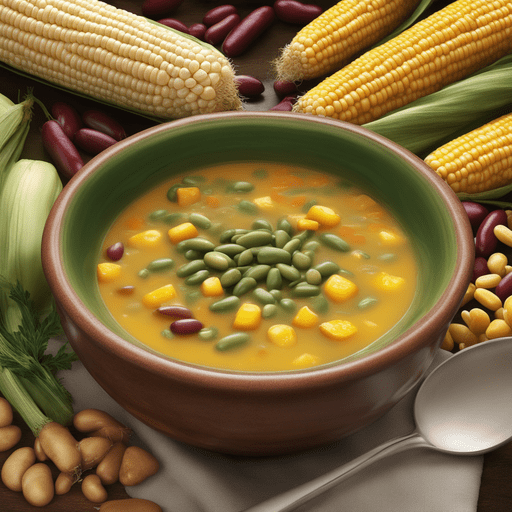Dive deep into the world of natural healing with these top 25 herbs for stress and anxiety. From their historical roots to modern uses, discover the power of nature in alleviating everyday stresses.
Table of Contents
Introduction
In our modern, fast-paced world, the challenges of daily life can often lead to feelings of stress and anxiety. While there are myriad ways to address these emotions, one time-honored approach has been the use of natural remedies, particularly herbs. For centuries, cultures around the world have turned to the plant kingdom to find solace, relief, and balance in the face of life’s uncertainties. From ancient Ayurvedic practices to traditional Indian and Chinese medicine, and even within the annals of European folklore, herbs have played a pivotal role in promoting mental and emotional well-being. This guide delves into the top 25 herbs that have been celebrated for their potential to support the nervous system, alleviate anxiety, and foster a sense of calm. Whether you’re a seasoned herbal enthusiast or just beginning your journey into botanical remedies, this compilation aims to shed light on the gentle power of nature’s own medicine for mental health.
The Connection Between Stress, Anxiety, and Wellness
Before diving into the herbal world, let’s understand our foes. What exactly are stress and anxiety? Stress is a reaction to a situation where a person feels threatened or anxious. Anxiety, on the other hand, can be a reaction to stress, or it can emerge without any apparent external cause. These disturbances can disrupt our overall wellness. But guess what? The right herbs can be our allies in this battle, bringing balance to both mind and body.
Top 25 Herbs for Stress and Anxiety
- Ashwagandha (Withania somnifera): An adaptogenic herb, it helps the body handle stress and supports overall vitality.
- Chamomile (Matricaria recutita): Often consumed as a tea, it’s known for its calming properties.
- Passionflower (Passiflora incarnata): May help reduce anxiety and promote sleep.
- St. John’s Wort (Hypericum perforatum) is often used for mild to moderate depression.
- Lemon Balm (Melissa officinalis): Known for its calming properties.
- Lavender (Lavandula angustifolia): Lavender essential oil can be inhaled or applied topically to help reduce anxiety.
- Valerian Root (Valeriana officinalis): Commonly used for its sedative properties, especially to aid sleep.
- Holy Basil (Tulsi) (Ocimum sanctum) is an adaptogen that might help the body adapt to stress.
- Rhodiola Rosea: Another adaptogen, it may improve mood and reduce fatigue.
- Skullcap (Scutellaria lateriflora): Often used for relaxation and to support the nervous system.
- Kava Kava (Piper methysticum): Has been used to produce feelings of relaxation and combat anxiety.
- Ginkgo Biloba: May help reduce anxiety by increasing blood flow to the brain.
- Bacopa Monnieri: Traditionally used to enhance cognitive function and reduce stress.
- Gotu Kola (Centella asiatica): Used for its potential anti-anxiety and antidepressant properties.
- Hops (Humulus lupulus): Known for its sedative properties, often used to aid sleep.
- Maca (Lepidium meyenii): May help increase energy and reduce stress.
- Licorice Root (Glycyrrhiza glabra): Can support adrenal function and balance cortisol levels.
- Oat Straw (Avena sativa): Can have a calming effect on the nervous system.
- L-Theanine: An amino acid found in tea leaves, known for its calming properties.
- Schisandra (Schisandra chinensis): An adaptogen that supports stress resistance.
- Eleuthero (Siberian Ginseng) (Eleutherococcus senticosus): Another adaptogen, often used to combat fatigue and stress.
- Brahmi (Bacopa monnieri): Supports cognitive function and helps reduce stress.
- California Poppy (Eschscholzia californica): Often used for its sedative properties.
- Mugwort (Artemisia vulgaris) is sometimes used for its calming properties.
- Catnip (Nepeta cataria): Not just for cats! It has mild sedative properties that can be calming for humans too.
Welcome to our comprehensive guide to the top 25 Herbs for Stress and anxiety that are renowned for alleviating stress and anxiety. Due to the depth of information we want to share with you, we have split this guide into five distinct parts. In each segment, we will explore:
Overview: A brief introduction to the herb
Key Benefits: The core advantages and healing properties of the herb
Usage and Dosage: Recommended ways to incorporate the herb into your regimen and safe dosage limits
Conclusion: A summary of the primary takeaways for each herb
We encourage you to read all the parts for a well-rounded understanding of these holistic solutions. With that said, let’s delve into Part 1.
1. Ashwagandha (Withania somnifera): An adaptogenic herb, it helps the body handle stress and supports overall vitality.
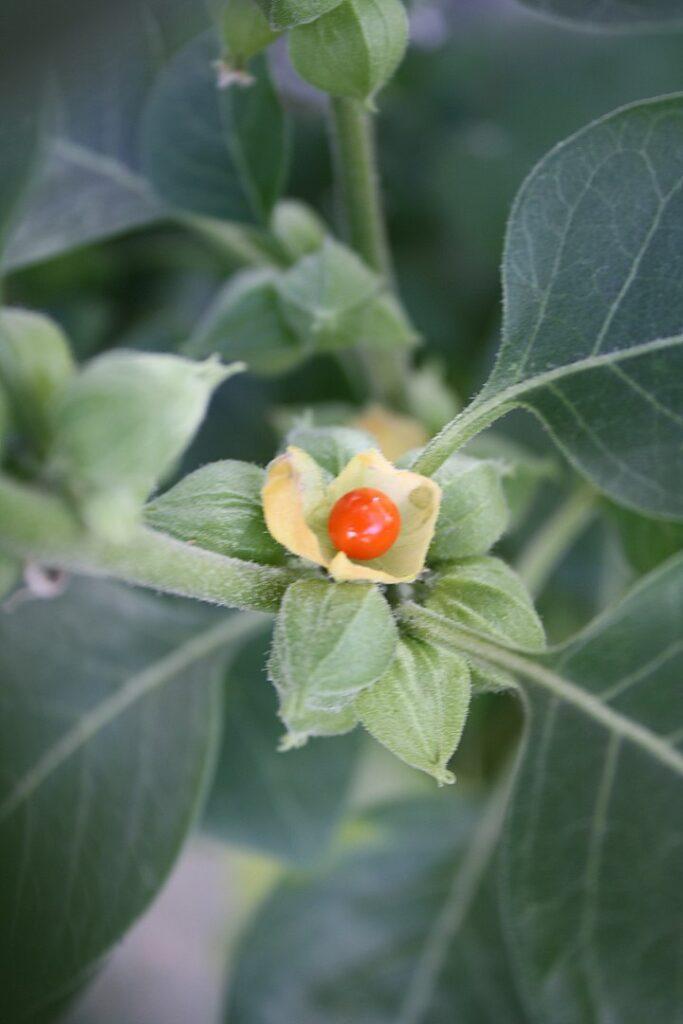
Overview:
Ashwagandha, also referred to as “Indian ginseng,” is a crucial herb utilized in Ayurveda, a conventional Indian medical practice. Ashwagandha, which means “smell of the horse” in Sanskrit, refers to both the herb’s distinctive odor and the long-held idea that it can give one the vigor and strength of a horse.
Parts Used:
Although the leaves and berries of the Ashwagandha plant have also been used in various formulations, the root is the component that is most frequently used.
Key Benefits:
- Adaptogenic qualities: One of the main reasons Ashwagandha is so highly regarded is that it has qualities that help the body adapt to stress. Adaptogens help the body deal with physical and mental stress and adjust to it.
- Reducing worry and anxiety: Ashwagandha may help lower cortisol levels, which is the body’s main stress hormone. This could make people feel less stressed and anxious.
- Better Sleep: Ashwagandha can help improve the quality of sleep and may reduce insomnia, especially when worry or anxiety is a cause.
- Neuroprotection: It may guard against diseases that damage nerve cells and may improve memory and brain function.
- Ashwagandha has parts that may help lower inflammation and fight oxidative stress.
- Ashwagandha may help normalize thyroid hormone levels, especially in people with an underactive thyroid, according to early studies.
- Fertility and Sexual Health: It has long been used as an aphrodisiac, but new research shows that it may also improve the quality of sperm and fertility in men.
Dosage and Usage:
Ashwagandha comes in pills, powders, tinctures, and teas, among other things. The dosage and form of a medicine should usually be based on the condition being treated and the advice of a trained medical professional.
Safety and Precautions:
Ashwagandha is usually safe for most people when taken as recommended, but it’s important to know about any possible side effects or drug interactions. Before using Ashwagandha, women who are pregnant or nursing, people with autoimmune diseases, or people who are taking medications (especially thyroid medications or sedatives) should talk to a doctor.
Conclusion:
Ashwagandha has a lot of benefits, especially for reducing stress and improving brain function. As with any supplement or herb, you should always make sure to buy high-quality goods and talk to a health professional about any possible interactions or worries.
2. Chamomile (Matricaria recutita): Often consumed as a tea, it’s known for its calming properties.
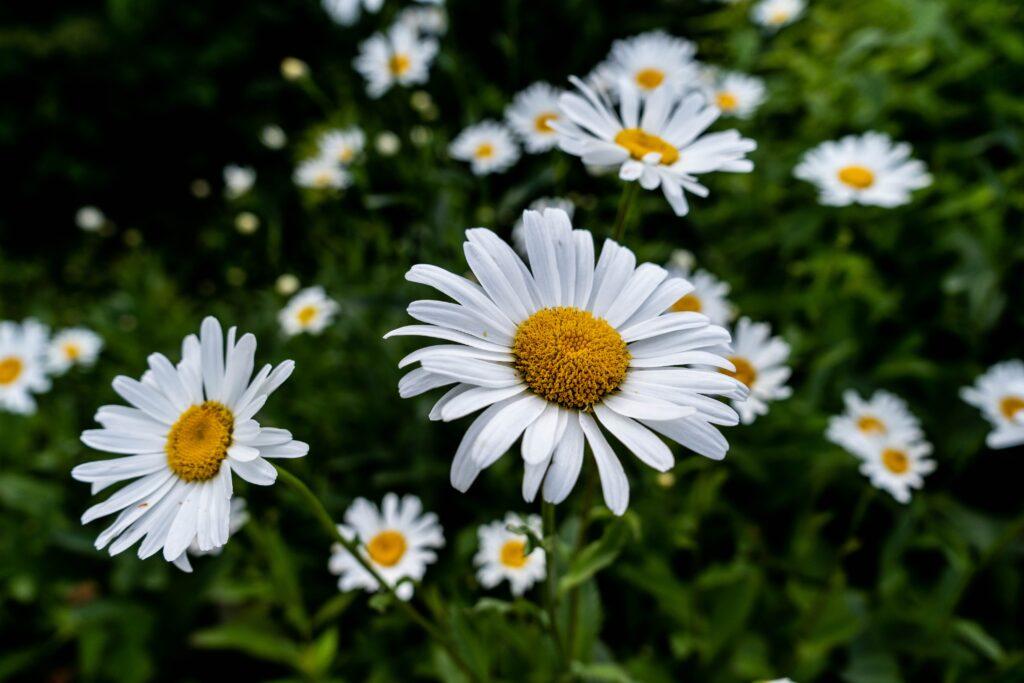
Overview:
Chamomile is one of the oldest medicines that people have used. It comes from Western Europe and North Africa. For hundreds of years, people have used it as a natural treatment for a wide range of health problems. Its medicinal qualities come from the daisy-like flowers that are easy to spot.
Parts Used:
The main part of the chamomile plant that is used for medicine is the dried flowers. You can make tea, extracts, and oils with them.
Key Benefits:
- Chamomile is often used as a digestive relaxant, and it can help relieve the signs of indigestion, gas, or a stomachache.
- Sleep and Insomnia: Chamomile is known for being a natural sleep aid, and it can also help people who have trouble sleeping.
- Skin Health: Chamomile has anti-inflammatory and antioxidant qualities that are good for the health of your skin, especially if you have rashes or irritations.
- Anxiety and Depression: Some studies show that chamomile may have calming and anxiety-relieving effects, which can help reduce anxiety and depression symptoms.
- Boosting the immune system: The antioxidant qualities of chamomile may help the immune system.
- Anti-inflammatory: It can help lower inflammation, which could help people with osteoarthritis.
- Period Pain: Because it relaxes muscles, chamomile tea may help ease the pain of period cramps.
Dosage and Usage:
Chamomile can be taken in different ways:
- The most common way is to steep dried chamomile leaves in hot water to make tea.
- Essential oils can be put on the skin (often with a carrier oil) or used in massage.
- You can get extracts and capsules as food supplements.
Safety and Precautions:
Most people can use chamomile without worrying about getting sick. But people who are allergic to ragweed, marigolds, daisies, and other plants in the Asteraceae family might also be immune to chamomile.
It might not work well with some medicines, like blood thinners or sleep aids.
Before using it in large amounts or as medicine, women who are pregnant or nursing should talk to a doctor.
Conclusion:
Chamomile is still a popular plant medicine that is known for calming the mind and body. Whether it’s drunk as a soothing bedtime tea or used in skin care routines, everyone knows and appreciates its gentle benefits. Make sure you only buy high-quality goods and talk to a doctor if you have any questions or are taking it with other medicines.
3. Passionflower (Passiflora incarnata): May help reduce anxiety and promote sleep.
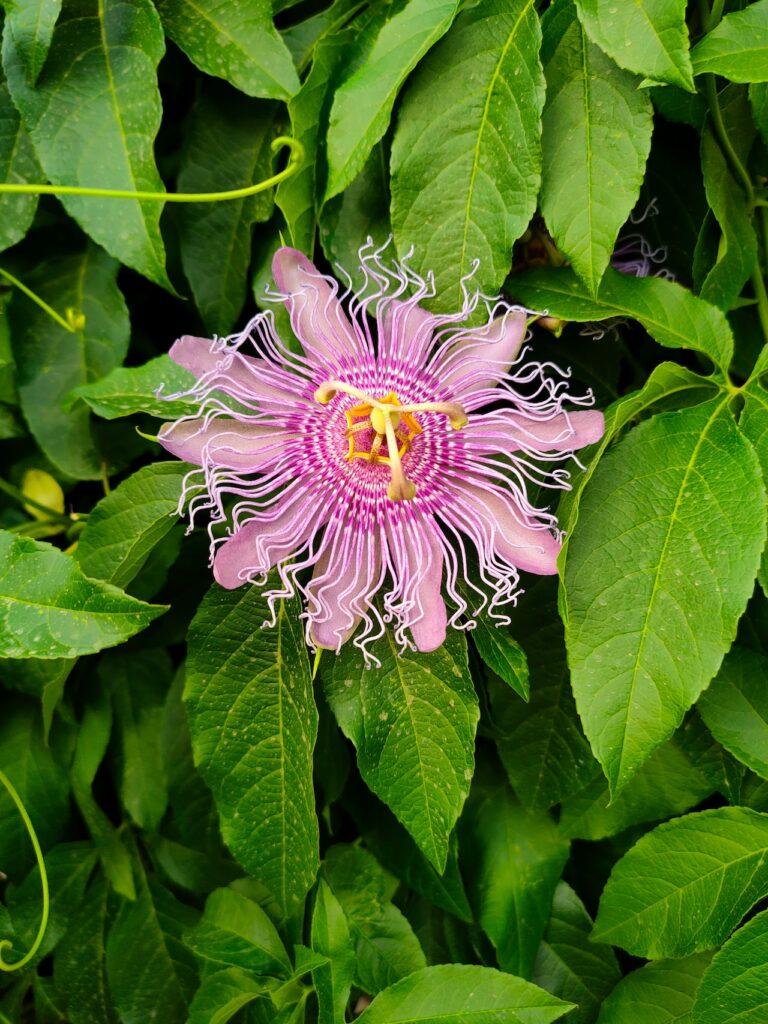
Overview:
Passionflower is a plant that grows in the southeastern parts of the Americas. It is known for its beautiful flowers and healing properties. In the 16th century, Spanish explorers gave the flower its name “passionflower” because it reminded them of Christ’s suffering during the Passion. The parts of the flower were thought to reflect different parts of the Passion, such as the whips.
Parts Used:
The leaves, twigs, and flowers, as well as other parts of the plant that grow above the ground, are used to make medicines. They can be taken in the form of tea, liquids, or capsules.
Key Benefits:
- Anxiety Reduction: Passionflower has been used for a long time because it calms people down. This makes it useful for treating anxiety and nervous illnesses. Studies show that it might be as effective as some benzodiazepine drugs at treating generalized anxiety disorder.
- Sleep Improvement: It may help people who have trouble sleeping or don’t sleep well because it has calming qualities.
- Some studies show that passionflower can help ease the symptoms of menopause, like hot flashes.
- Pain Reduction: Traditional uses include treating pain from things like muscle cramps or toothaches.
- Benefits for the heart: Studies on animals show that passionflower might help lower high blood pressure, but more research is needed in humans.
- Withdrawal Symptoms: It has been looked at as a possible herb to help with the symptoms of opioid withdrawal, though more study is needed in this area.
Dosage and Usage:
Passionflower can be eaten in different ways:
- Let the dried leaves and stems soak in hot water to make tea.
- Extracts and tinctures are concentrated forms that are often taken as drops.
- Capsules and tablets: These have uniform doses and can be taken as dietary supplements.
Safety and Precautions:
When taken as recommended, passionflower is usually safe:
It might make sedatives work better, so be careful if you take them together.
Since there isn’t enough study on its safety in pregnant or breastfeeding women, they shouldn’t take it.
Some people might have side effects like feeling dizzy, confused, or having muscles that don’t move or move in the right way.
Conclusion:
Passionflower is still a popular herbal remedy because it might help with nervousness, insomnia, and other similar problems. Before adding it to a health routine, it’s always a good idea to make sure it comes from a good source and talk to a doctor, especially if you’re taking drugs or dealing with long-term health problems.
4. St. John’s Wort (Hypericum perforatum) is often used for mild to moderate depression.

Overview:
St. John’s Wort is an annual plant with yellow flowers that is native to Europe but has spread to many other parts of the world. The name “St. John’s Wort” comes from the fact that it blooms and is picked on June 24, which is St. John’s Day. The old English word “wort” means “plant.”
Parts Used:
The parts that are used for medicine are mostly the blooming tops. These can be dried and used to make drinks, capsules, tablets, tinctures, and lotions.
Key Benefits:
- Mood Disorders: Scientists have looked at St. John’s Wort a lot to see if it could help treat mild to severe depression. In some places, it’s even written on a prescription for this reason.
- Traditional medicine has used the herb’s anti-inflammatory and antimicrobial qualities to help wounds, burns, and other skin conditions heal faster.
- Some people take it to help with nerve pain, which is called neuralgia.
- Premenstrual Syndrome (PMS): Early research shows that it might help ease the symptoms of PMS.
- Seasonal Affective Disorder (SAD): There is proof that it could help treat SAD, a type of depression that happens at certain times of the year.
Dosage and Usage:
St. John’s Wort can be consumed in various forms:
- Tea is prepared by steeping the dried flowers in hot water.
- Capsules and tablets Offer a convenient and standardized dosage.
- Tinctures and Extracts: Liquid preparations can be taken in drop form.
- Topical Preparations: For direct application on the skin
Safety and Precautions:
Even though St. John’s Wort is natural, there are some things that could go wrong with it:
How Drugs Work Together: This herb is known to interact with a number of medicines, including antidepressants, birth control pills, blood thinners, and a few others.
This is mostly because of how it affects the enzyme system in the liver that breaks down medicines.
It can make the skin more sensitive to sunlight, making it more likely to get a sunburn.
Side Effects: Some people may have side effects like nervousness, dizziness, dry mouth, or stomach problems.
Women who are pregnant or nursing, as well as children, shouldn’t take St. John’s Wort because we don’t know enough about its safety.
Conclusion:
St. John’s Wort is a useful herb that has been used for a long time to treat a number of illnesses, especially mood problems. Because it could cause drug problems and side effects, it’s important to use it carefully. Before adding St. John’s Wort to your health routine, you should always talk to a doctor or nurse, especially if you’re taking medicines or dealing with health problems.
5. Lemon Balm (Melissa officinalis): Known for its calming properties.
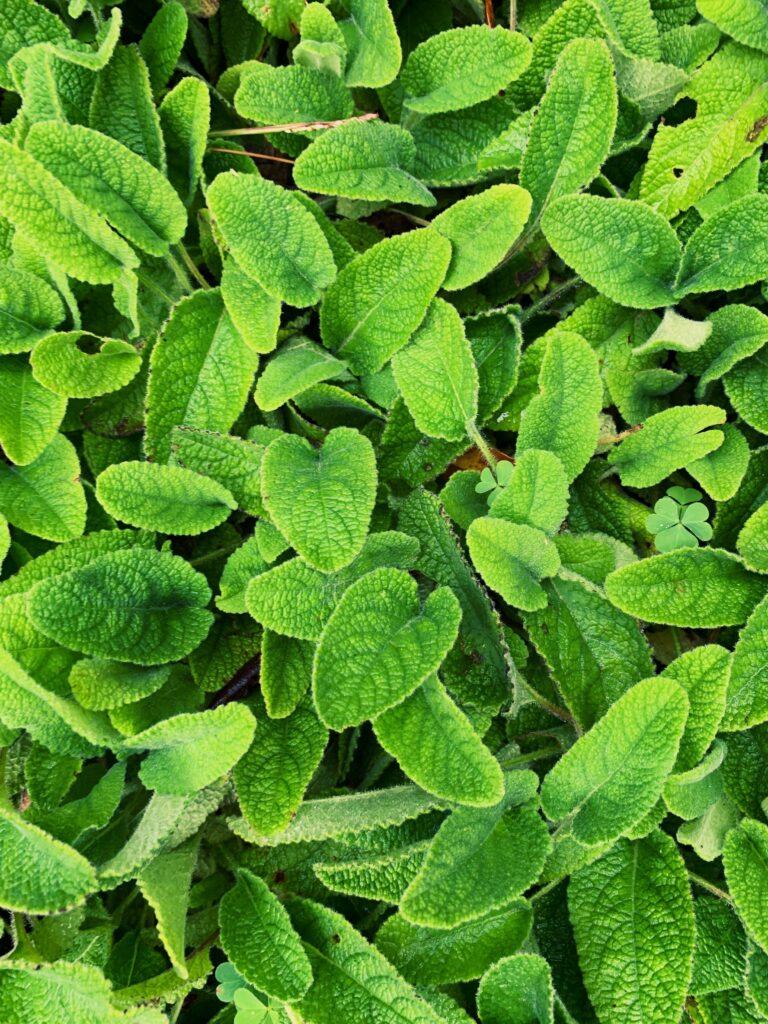
Overview:
Lemon balm comes from Europe and is related to mint. However, it is now grown all over the world because it is famous in gardens and herbal remedies. As its name suggests, it smells like lemons and is both calming and refreshing.
Parts Used:
The main part of the lemon balm plant that is used in cooking and medicine is the leaves. You can use them both fresh and dried.
Key Benefits:
- Anxiety and Stress: Lemon balm has long been used to ease the symptoms of anxiety, stress, and nervous strain. It can help calm nerves because it has a relaxing effect.
- Sleep Disorders: Because it is a light sedative, it can help people who have trouble sleeping or staying still.
- Lemon balm can help with stomach problems like bloating, gas, and indigestion. It helps relax the muscles of the digestive system.
- Cognitive Function: Some studies show that lemon balm might improve cognitive function and lessen the symptoms of Alzheimer’s disease.
- Herpes and Cold Sores: Putting lemon balm ointments on cold sores caused by the herpes simplex virus can help them heal faster.
- Antioxidant qualities: It has antioxidant qualities that can help keep free radicals from hurting cells.
Dosage and Usage:
Lemon balm can be utilized in various forms:
- Tea: Hot water can be poured over fresh or dried leaves to make a soothing and delicious tea.
- Tinctures and extracts are liquid mixtures that concentrate the flavor of the herb.
- Capsules and tablets offer standard doses so that the effects of the medicine are more consistent.
- Essential oils and creams can both be used for massage and other uses on the skin.
Safety and Precautions:
Most of the time, lemon balm is safe to eat in the amounts that are found in foods. But some people might have side effects like feeling sick, throwing up, having stomach pain, feeling dizzy, or breathing.
Because lemon balm makes you feel sleepy, taking it with other calming medicines or herbs could make you feel too sleepy.
Before using lemon balm as medicine, women who are pregnant or nursing should talk to a doctor.
Conclusion:
Lemon balm is still a popular herb in gardening and herbal remedies because it smells great and has many health benefits. Its mild effects make it a favorite in plant medicine. It can be made into a tea or used in a skin balm. Before adding new herbs to your routine, you should always talk to a doctor or nurse, especially if you are taking medicines or dealing with health problems.
6. Lavender (Lavandula angustifolia): Lavender essential oil can be inhaled or applied topically to help reduce anxiety.
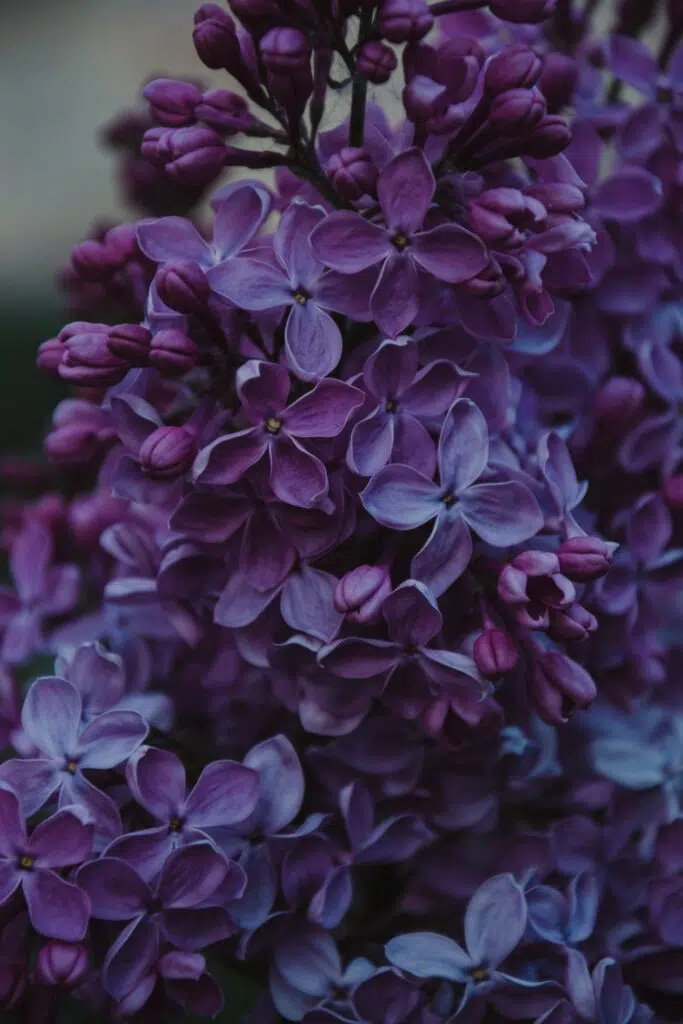
Overview:
Lavender is an evergreen plant that is mostly found in the Mediterranean. It has violet-blue flowers that grow on thin, long stems. Lavender has been used for hundreds of years in different cultures for medicinal, culinary, and decorative reasons. Its smell is soothing and pleasant.
Parts Used:
The flowering tops and the essential oils made from them are the most widely used parts of the plant for medicinal and aromatic purposes.
Key Benefits:
- Stress and Anxiety: Lavender essential oil is well known for its ability to calm people down. If you smell it or put it on your skin (often diluted), it can help relieve worry and anxiety.
- A lot of people find that lavender goods or essential oils help them sleep better and get rid of insomnia. It’s a popular choice for sleep diffusers and pillow sprays.
- Lavender is good for your skin because it has antiseptic and anti-inflammatory qualities. It can help with small burns, bug bites, and other skin problems.
- Headache Relief: If you smell lavender essential oil or put it on your temples after diluting it, it may help relieve stress headaches or migraines.
- Digestive Health: Lavender has been used for a long time to treat digestive problems like bloating, upset stomach, and gas.
- When lavender oil is put on the skin (usually in a weak form), it can help relieve pain from sore muscles or joints.
Dosage and Usage:
Lavender can be enjoyed in various forms:
- Essential Oil: This concentrated oil is usually used in diffusers, diluted for direct use, or added to bathwater.
- Herbal tea can be made by letting dried lavender flowers soak in hot water.
- Some types of lavender are edible and can be used in food, drinks, and baked goods.
- Lotions and balms: Because it smells nice and has healing qualities, lavender is often added to skin care and body care products.
Safety and Precautions:
Lavender is usually safe for most people, but some people might have an allergic reaction to it, which could cause symptoms like itching or a rash.
When lavender oil is taken by mouth, it can be harmful and should be avoided.
If you consumed a lot of lavender, you might get constipation, a headache, or an increased hunger.
Women who are pregnant or nursing should use lavender with care and talk to a doctor before doing so, especially if they want to use lavender essential oil.
Conclusion:
Lavender is still used a lot in plant medicine and aromatherapy because it has so many uses and smells so good. Lavender’s calming benefits continue to charm people, whether they use it as an aromatic oil, a soothing tea, or a tasty treat. As always, it’s important to use herbs like lavender carefully and to talk to a doctor if you have any questions or worries about your health.
7. Valerian Root (Valeriana officinalis): Commonly used for its sedative properties, especially to aid sleep.

Overview:
Valerian is an annual plant that is originally from Europe and Asia, but it is now grown in North America as well. The plant has pink or white flowers with a sweet smell, but the root has been used as medicine for over 2,000 years.
Parts Used:
The plant’s roots and rhizomes, which are underground stems, are dried and made ready for use in medicine.
Key Benefits:
- One of the most well-known uses of valerian root is as a sleep aid. It can help you sleep better and fall asleep faster. Its calming effects can help people who have trouble sleeping or can’t sleep at all.
- Anxiety and Stress: Valerian can help calm nerves, lessen anxiety, and relieve stress by acting as a natural sedative.
- Pain Relief: Valerian root has been used for a long time to treat pain, especially cramps and pain during menstruation.
- Heart Health: Some studies show that valerian might help with high blood pressure by keeping blood vessels relaxed and improving general heart health.
Dosage and Usage:
Valerian can be consumed in various forms:
- Capsules and tablets make it easy to take the same amount of valerian every day.
- Tea: Valerian root can be soaked in hot water to make tea, but it has a strong taste that some people don’t like.
- Tinctures and extracts are liquids that can be taken straight or mixed with water.
- The right amount of valerian to take can change from person to person and from condition to condition. Most of the time, it’s best to start with a lower dose and slowly raise it if needed.
Safety and Precautions:
- Even though valerian is usually thought to be safe for short-term use, it can cause headaches, stomach upset, dry mouth, and vivid dreams in some people.
- The long-term safety of valerian isn’t well known, so it’s best to use it for short amounts of time and then take a break.
- Valerian may make sedative drugs, like alcohol, work even better, so it’s important to be careful when using them together.
- Women who are pregnant or breastfeeding shouldn’t use valerian because there isn’t enough proof to show that it is safe to do so.
Conclusion:
Valerian root has been used as a natural cure for hundreds of years, especially for its ability to help people relax and sleep better. As with any herbal medicine, it’s important to use valerian root wisely, know about any possible interactions or side effects, and talk to a doctor before adding it to a wellness routine.
8. Holy Basil (Tulsi) (Ocimum sanctum): An adaptogen that might help the body adapt to stress.

Overview:
Holy Basil is a plant with green leaves that comes from Southeast Asia. It is a holy plant in India, where it is often grown in homes and temples and used in religious ceremonies. Holy Basil has been used for thousands of years in traditional medicine, especially Ayurveda, because of its spiritual value.
Parts Used:
The leaves, stems, seeds, and oil are used for medicinal and therapeutic purposes.
Key Benefits:
- Tulsi is known as an adaptogen, which is a chemical that helps the body deal with stress. It can help control cortisol levels and have a cooling effect, which makes you feel less stressed and anxious.
- Antioxidant qualities: Holy Basil has strong antioxidant qualities that fight oxidative stress and neutralize free radicals in the body.
- Anti-inflammatory: Tulsi can help lower inflammation in the body, which is good for many conditions, from arthritis to heart disease.
- Blood Sugar Levels: Some studies show that Holy Basil can help keep blood sugar levels stable, which may be good for people with diabetes.
- Boosts the immune system: Regular use can make the body’s defensive response stronger, making it less likely to get sick.
- Heart Health: The herb can help drop cholesterol, which is good for the health of the heart.
Dosage and Usage:
Holy Basil can be consumed in several forms:
- Tea: You can make a soothing cup of Tulsi tea with either fresh or dried leaves.
- Capsules and tablets: These have standardized amounts of the good chemicals in the herb.
- Essential oil can be diluted and used on the skin or in massage.
- Fresh Leaves: You can chew them or put them in salads and other recipes.
Safety and Precautions:
- Most people can easily eat Holy Basil, but some people might have mild side effects like nausea or diarrhea.
- It is known to stop blood from clotting, so people who take medicines that thin the blood should be careful.
- Before using Holy Basil, women who are pregnant or nursing should talk to a doctor because it might have an effect on reproductive hormones.
- People with hypoglycemia or diabetes should keep an eye on their blood sugar levels when they eat Tulsi because it can lower blood sugar.
Conclusion:
Holy Basil, also called Tulsi, is a plant that has religious meaning, but it also has many health benefits that have been known and used for ages. Traditional medicine loves this plant because it is good for the mind and body as a whole. It can be drunk as a relaxing tea or taken as a supplement. As with all herbs, it’s best to talk to a doctor before adding Holy Basil to your daily routine, especially if you already have health problems or are taking medicine.
9. Rhodiola Rosea: Another adaptogen, it may improve mood and reduce fatigue.
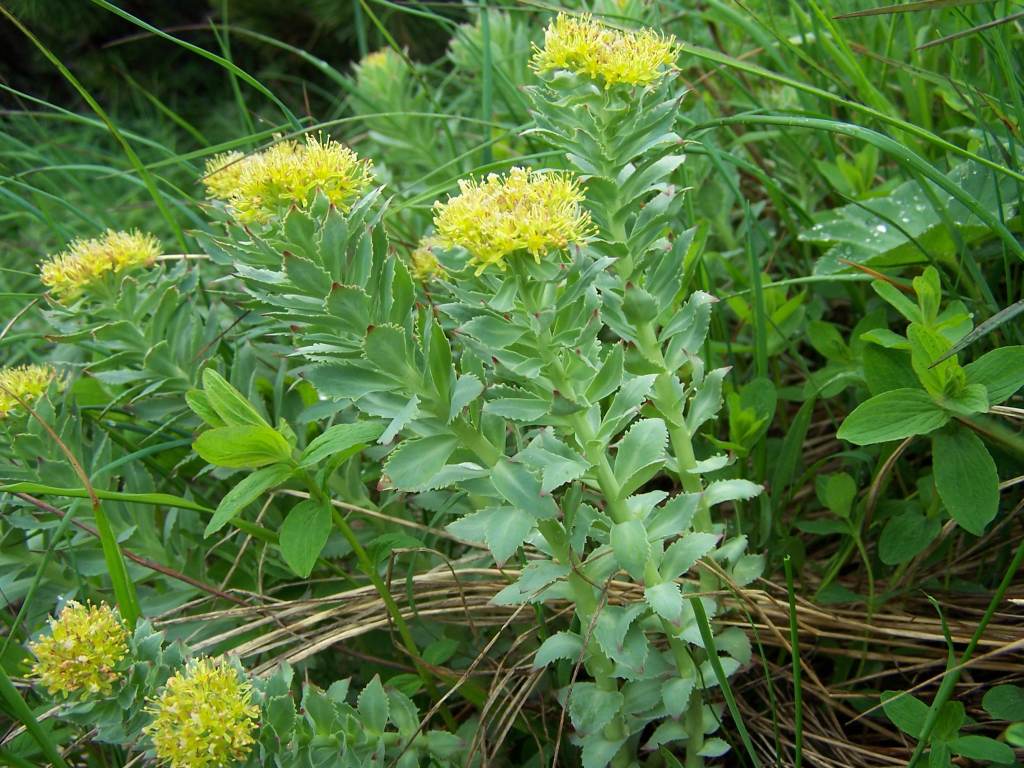
Overview:
Rhodiola Rosea is a perennial plant that grows naturally in the Arctic parts of Europe, Asia, and North America. The plant has fleshy leaves and yellow flowers, but it is the root that is known for being a powerful medicine. Rhodiola has been used to improve health since ancient times. Vikings used it to get stronger and last longer, and traditional Chinese and Russian doctors used it for a wide range of health benefits.
Parts Used:
The root of the Rhodiola plant is the primary part used for medicinal purposes, often dried and extracted into supplements.
Key Benefits:
- Rhodiola is an adaptogen, which means it helps the body adapt to and fight physical, chemical, and environmental stress. This makes it good for reducing stress. It can keep the body from making too much cortisol, which is the main stress hormone.
- Rhodiola has been studied to see if it can help lessen the signs of fatigue and increase energy and alertness.
- Mood Enhancement: Some studies show that Rhodiola may have medicinal properties. This means that it can help improve mood and fight the signs of depression.
- Cognitive Function: Rhodiola may help improve memory, focus, and other mental functions, especially when the mind is tired or stressed.
- Physical Performance: It has been used for a long time to increase physical stamina and shorten the time it takes to heal after a workout.
- Health of the Heart: The herb can help reduce heart damage caused by stress by stabilizing the heart’s beat and making it work better.
Dosage and Usage:
Rhodiola Rosea can be consumed in various forms:
- One of the most popular ways to take standardized doses is in the form of a capsule or tablet.
- Tinctures and extracts are liquids that you can take by themselves or mix with water.
- Tea: Some people steep the dried root in hot water to make tea, which is less popular.
- It’s important to remember that the best dose depends on the person and the result they want. Because of this, it is usually best to start with a smaller dose and increase or decrease it as needed.
Safety and Precautions:
- Rhodiola is thought to be safe for most people when taken in the amounts suggested. But some people might have side effects like dry mouth, dizziness, or trouble sleeping.
- People with bipolar illness should be careful with Rhodiola because it could cause manic episodes.
- Before taking Rhodiola, women who are pregnant or nursing should talk to a doctor or nurse.
- It’s important to always think about possible drug conflicts, especially with medicines or stimulants.
Conclusion:
Rhodiola Rosea is a powerful plant that is known for its adaptogenic effects. Rhodiola has gained attention in modern herbal medicine and wellness groups because it helps the body deal with both mental and physical stress. Any time you’re thinking about taking a new vitamin, it’s important to talk to your doctor to make sure it’s a good fit for your needs and health.
10. Skullcap (Scutellaria lateriflora): Often used for relaxation and to support the nervous system.
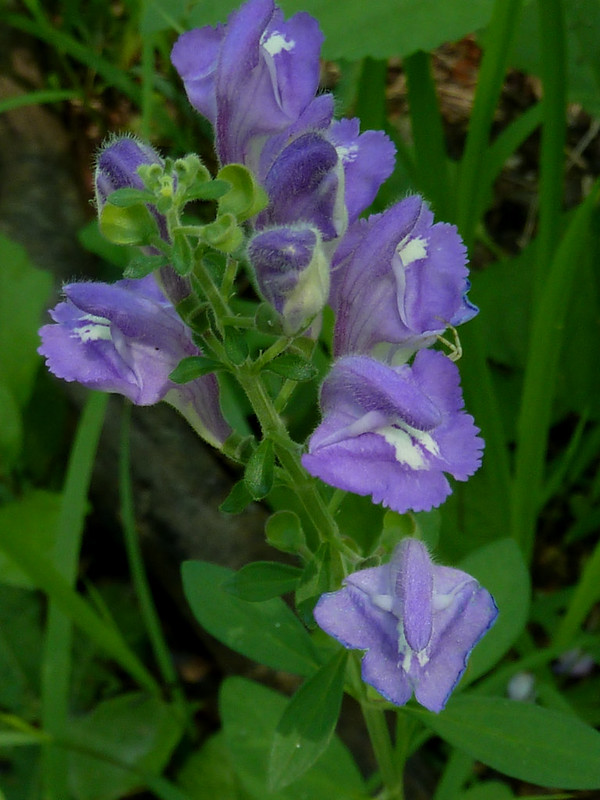
Overview:
Skullcap is a North American plant that grows back every year. It belongs to the mint family and has small, pretty blue or purple flowers. The name “skullcap” comes from the fact that the flower looks like ancient European military helmets. Over the years, the vegetable has been used for many different things, from religious rituals to traditional medicine.
Parts Used:
The aerial (above-ground) parts of the plant, particularly the leaves and flowers, are used for medicinal purposes.
Key Benefits:
- Nervine: Skullcap is a nervine, which means it helps strengthen the nervous system. It is often used to calm nerves, ease worry, and help maintain a calm mood.
- Sleep Aid: Since skullcap is a sedative, it can be used to help people sleep and treat conditions like sleeplessness.
- Neuroprotection: Some studies show that antioxidants in the skullcap can keep nerve cells from getting hurt.
- Anti-inflammatory: The herb has qualities that make it good for treating conditions where inflammation is a factor.
- Muscle Spasms: In the past, a skullcap was used to help stop muscles from jerking and spasming.
Dosage and Usage:
Skullcap can be consumed in various forms:
- Tea: Steeping dried skullcap in hot water makes a calming plant tea.
- Tinctures and extracts are liquid preparations that capture the essence of the herb and can be eaten alone or with water.
- Capsules and tablets: These are a handy way to get standardized doses of skullcap.
- The right dose will vary from person to person and depend on the unique health problem being treated.
Safety and Precautions:
- When used as advised, a skullcap is usually thought to be safe. But it could cause side effects like dizziness, confusion, and even seizures, which are rare.
- In the past, it was found that some commercial skullcap goods were mixed with other plants, so it’s important to buy from a reliable source.
- It’s important to tell the difference between American skullcap (Scutellaria lateriflora) and Chinese skullcap (Scutellaria baicalensis), as they have different qualities and uses.
- If you mix skullcap with other plants or medicines that make you sleepy, their effects might get stronger.
- Before using a skullcap, women who are pregnant or nursing should talk to a doctor or nurse.
Conclusion:
Skullcap has been used for a long time in traditional medicine because it calms and protects nerve cells. As with any plant, it’s important to know what it does, what risks it might have, and to make sure you’re getting a real product. When adding a new plant to your routine, you should always think about getting advice from a health professional.
11. Kava Kava (Piper methysticum): Has been used to produce feelings of relaxation and combat anxiety.
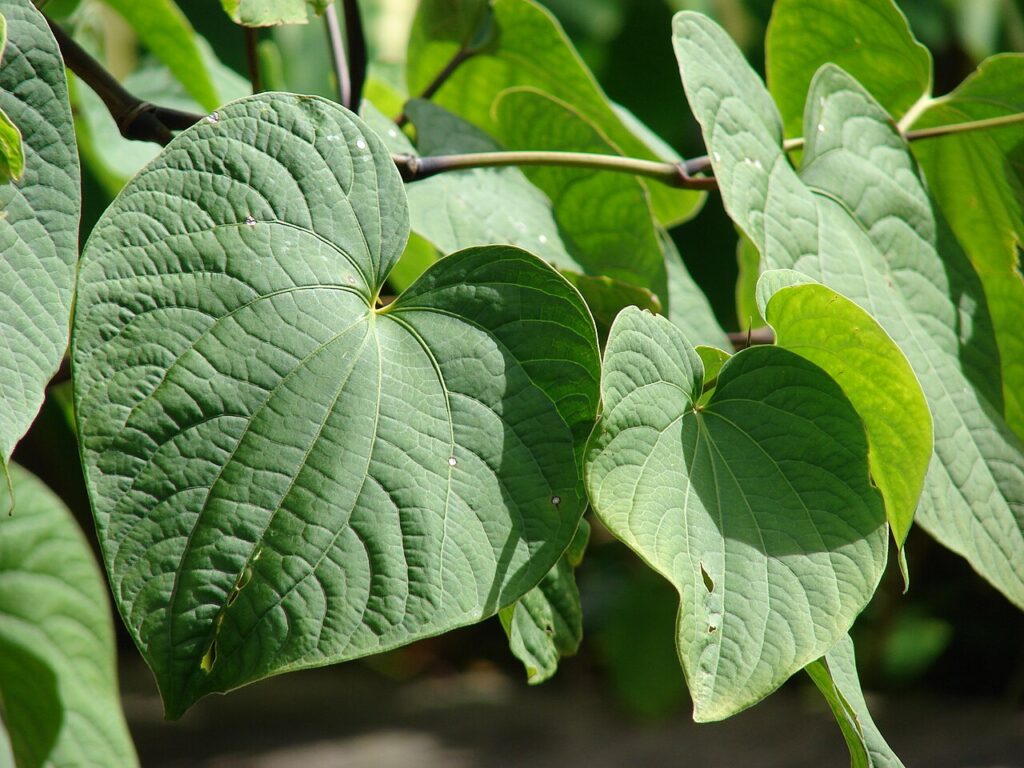
Overview:
Kava is an exotic plant that grows on islands in the South Pacific. It has been a big part of the culture of these islands for hundreds of years, both as a social rite and as a medicine. The kava drink, which is usually made by mashing the roots of the plant and mixing them with water, is known for making people feel calm and happy without affecting their ability to think clearly.
Parts Used:
The roots of the kava plant are the primary part used for therapeutic and ceremonial preparations.
Key Benefits:
- Reducing anxiety: Kava is best known for its ability to make people feel less anxious. Studies have shown that kava can help people with generalized anxiety disorder feel better.
- Better Sleep: Its calming affects can help people with insomnia or other sleep problems fall asleep and stay asleep.
- Muscle Relaxation: In addition to the effects it has on the mind, kava can also be used to ease muscle stress or spasms.
- Mood Enhancement: The happy feelings that come with kava can make you feel better and give you a general sense of well-being.
Dosage and Usage:
Kava can be consumed in several forms:
- The traditional way to make this drink is to mash up the roots and let them soak in cold water.
- Capsules and tablets should have standardized amounts of kavalactone, which is the active ingredient in kava.
- Tinctures and extracts are liquids that can be added to drinks.
- Instant powders are easy to mix with water to make a drink quickly.
- Dosage is very different depending on the type of product and the person. As with any drug, it’s best to start with a low amount and increase or decrease it as needed.
Safety and Precautions:
- There has been some talk about whether or not kava is safe. Some countries have limited or banned kava products because of worries that they could hurt the liver. But a new study suggests that the risk to the liver may be small if the drug is used in a traditional or responsible way.
- No matter what, people with liver problems or who take medicines that affect the liver should stay away from kava.
- The skin condition known as “kava dermopathy,” which is characterized by scale-like rashes, can result from heavy and prolonged kava use.
- If you mix kava with alcohol or other drugs that make you sleepy, the effects can get worse, which can be dangerous.
- It’s important to buy kava goods from trustworthy places to make sure they don’t have any unwanted ingredients and only have the parts of the kava plant you want.
Conclusion:
Kava has a long history in many cultures and may help with many things, especially worry and stress. As with all herbs, it’s important to use kava in a responsible way, be aware of its benefits and possible side effects, and talk to a doctor before adding it to a wellness routine.
12. Ginkgo Biloba: May help reduce anxiety by increasing blood flow to the brain.
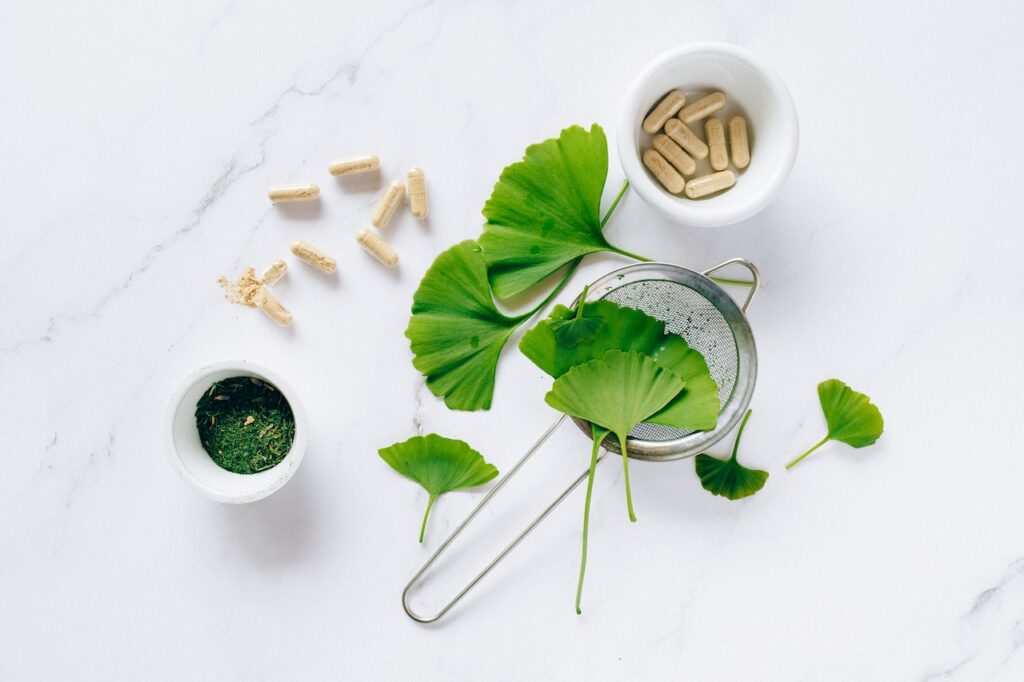
Overview:
The ginkgo tree has been around for more than 250 million years and comes from China. Its leaves, which look like fans, and seeds, which you can eat, have been used in Chinese medicine for thousands of years. People often think of the tree as a live fossil because it doesn’t have any close living relatives.
Parts Used:
The dried leaves are primarily used for medicinal preparations, while the seeds have culinary and medicinal uses in traditional contexts.
Key Benefits:
- Cognitive Function: Ginkgo is best known for how it might help with memory and thinking. It is thought to improve memory, concentration, and general mental speed. According to studies, it might be helpful in treating diseases like Alzheimer’s and aging-related cognitive loss.
- Circulation: Ginkgo can improve blood flow, especially in small vessels, which could help the brain, eyes, and limbs.
- Antioxidant Properties: The compounds in ginkgo work as antioxidants, neutralizing harmful free radicals that can damage cells and contribute to chronic diseases.
- Eye Health: Ginkgo may be good for eye health because it has antioxidant qualities and can improve circulation. This could slow the progression of age-related eye diseases.
- Mood and anxious: Some studies show that ginkgo may help improve mood and reduce anxious symptoms.
Dosage and Usage:
- Capsules and tablets: These contain standardized extracts that often have 24% flavonol glycosides and 6% terpene lactones, which are the main active ingredients.
- Tinctures and extracts are liquid medicines that you can take by themselves or mix with water.
- The process of making tea involves soaking dried ginkgo leaves in hot water for a short period of time.
- Most people take 120 to 240 mg a day, split into two or three doses, to get the benefits for their brain. But the right amount to take depends on the type of medicine and what each person needs.
Safety and Precautions:
- Ginkgo is usually thought to be safe when eaten in the right amounts. Even though they don’t happen often, possible side effects can include headaches, dizziness, irregular heartbeats, and stomach upset.
- Because ginkgo thins the blood, people who take anticoagulant or antiplatelet drugs or who have bleeding disorders should be careful and talk to a doctor before taking it.
- Ginkgo nuts have a poison called ginkgotoxin that can hurt you if you eat too many of them.
- Make sure you buy a good ginkgo product, especially one that has been tested to make sure it has the active compounds.
Conclusion:
Ginkgo biloba has been valued for thousands of years for its many health benefits, especially its ability to help the brain and blood flow. As with all vitamins, it’s important to know the right doses, possible interactions, and when not to take them. Talking to a doctor before adding ginkgo to your routine will make sure that it is safe and useful.
13. Bacopa Monnieri: Traditionally used to enhance cognitive function and reduce stress.

Overview:
Bacopa monnieri is an annual plant that grows in the wet areas of southern India, Australia, Europe, Africa, Asia, North and South America. It has been used in the old Ayurvedic medical system for thousands of years, especially to improve memory, calm anxiety, and treat a wide range of illnesses.
Parts Used:
The entire plant, especially the leaves, is used for medicinal purposes.
Key Benefits:
- Cognitive Improvement: Bacopa is best known for being a nootropic, which means that it can help improve the way the brain works. Studies have shown that regular use can improve memory, speed of learning, and processing of knowledge.
- Bacopa has compounds that can neutralize free radicals, stopping damage to cells and possibly protecting against diseases that come with getting older.
- Anti-anxiety and antidepressant: Bacopa has been used in traditional medicine, and some studies have shown that it may help reduce anxiety and depression symptoms.
- Neuroprotection: Some chemicals in Bacopa can help regulate neurotransmitters, which can help protect against cognitive decline and improve brain health in general.
- Anti-inflammatory: Bacopa has qualities that make it less likely for inflammation to happen in the body.
Dosage and Usage:
Bacopa monnieri can be consumed in several forms:
- Capsules and tablets: These often contain a standardized extract that makes sure the active chemicals, called bacosides, are dosed the same way every time.
- Powders: The dried plant can be ground up into a powder that can be added to food or drinks.
- Some people make tea by letting the whole herb sit in hot water for a while.
- Usually, the daily dose for standardized extracts is between 300 mg and 450 mg, but it’s important to follow the instructions for each product.
Safety and Precautions:
- When taken in the right amounts, bacopa is thought to be safe. Some people might have mild side effects like gut cramps, feeling sick, having a dry mouth, or feeling tired.
- Some medications, especially those that affect neurotransmitter systems, might combine with bacopa, so it’s important to talk to a doctor if you’re taking any.
- Since Bacopa can make you sleepy, you should be careful when taking it with other sleep aids or doing things that require you to be awake.
- Before taking Bacopa, women who are pregnant or nursing should talk to a doctor or nurse.
Conclusion:
Bacopa monnieri has been an important part of traditional medicine for a long time because it has so many benefits, especially for brain health and brain function. Many of these claims are now being backed up by modern research, which is making Bacopa an increasingly popular choice for people who want to support brain health in a natural way. Always talk to a doctor or nurse before adding new supplements or herbs to your routine to make sure they are safe and helpful.
14. Gotu Kola (Centella asiatica): Used for its potential anti-anxiety and antidepressant properties.

Overview:
Gotu Kola is a perennial plant that grows in marshy areas of Asia and Africa. It has small green leaves that look like fans and often grows near or in water. Even though it is called “Gotu Kola,” it is not linked to the kola nut and does not contain caffeine.
Parts Used:
The leaves and stems are the primary parts of the plant used for medicinal purposes.
Key Benefits:
- Cognitive Improvement: Like Bacopa monnieri, Gotu Kola is thought to be a nootropic plant that helps the brain work. Some modern studies and old ways of using it suggest that it may help with memory, focus, and anxiety.
- Wound Healing and Skin Health: Gotu Kola has been used for a long time to treat different skin conditions and help wounds heal. This is because it has anti-inflammatory qualities and can make the body make more collagen.
- Venous Insufficiency: There is proof that Gotu Kola can improve circulation, making it helpful for conditions like varicose veins and chronic venous insufficiency.
- Several studies have shown that Gotu Kola has anxiolytic (reduces anxiety) effects, which could be helpful for people who deal with worry and anxiety.
- Antioxidant Properties: The chemicals in Gotu Kola are antioxidants, which help the body fight off oxidative stress.
Dosage and Usage:
Gotu Kola can be consumed in various forms:
- Capsules and tablets: These make it easy to take regular amounts of the herb.
- Teas: Steeping the leaves makes a green tea.
- Tinctures and extracts are liquid medicines that you can take by themselves or mix with water.
- Gotu Kola is also used in creams and ointments to keep the skin healthy and help wounds heal.
- The right dose depends on the type of medicine, why it’s being used, and the person taking it. Usually, dosages run from 500 to 750 mg per day for cognitive benefits or anxiety relief, but it’s important to check the product’s instructions or talk to a medical professional.
Safety and Precautions:
- When taken in the right amounts, most people think Gotu Kola is safe. But headaches, stomachaches, and feeling dizzy are rare but possible side effects.
- Before taking Gotu Kola, women who are pregnant or who are nursing should talk to a doctor.
- Always make sure that the goods you buy come from reputable places to ensure their quality and purity.
Conclusion:
Traditional medicine has used Gotu Kola for hundreds of years because it has many health benefits, from helping the brain to healing the skin. As with any herb, it’s important to know its qualities, possible interactions, and any things you shouldn’t do with it. Seeking advice from a health care worker can help make sure the drug is used safely and effectively.
15. Hops (Humulus lupulus): Known for its sedative properties, often used to aid sleep.
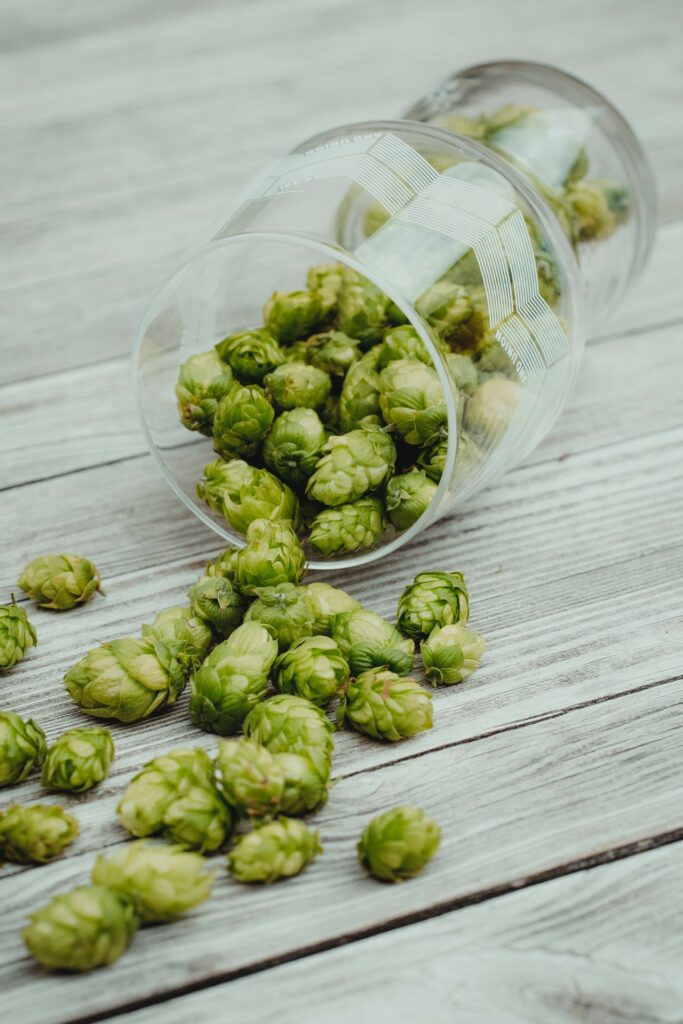
Overview:
Hops are the cone-shaped flowers of the hop plant, which is a hardy, perennial plant that grows by growing. Even though they are an important part of the brewing business because they add flavor and bitterness to beer, they have been used as medicine in Europe for hundreds of years.
- Hops have natural sedative effects that can help people get better sleep and treat insomnia. They are often mixed with other herbs, like valerian, to help people fall asleep.
- Mood and Anxiety: There is some proof that hops can calm the nervous system, which could help reduce anxiety and stress.
- Stomach Health: Hops have been used for a long time to help with stomach problems like indigestion and cramps.
- Antibacterial Properties: It has been shown that certain chemicals in hops have antibacterial properties that can help fight certain pathogens.
- Hops have estrogenic effects because they contain phytoestrogens, which are plant chemicals that can act like estrogen in the body. This has led researchers to look into how hops might help with signs of menopause.
Parts Used:
The female cone-shaped flowers, commonly referred to simply as “hops,” are the parts used both in brewing and for medicinal purposes.
Key Benefits:
- Hops have natural sedative effects that can help people get better sleep and treat insomnia. They are often mixed with other herbs, like valerian, to help people fall asleep.
- Mood and Anxiety: There is some proof that hops can calm the nervous system, which could help reduce anxiety and stress.
- stomach Health: Hops have been used for a long time to help with stomach problems like indigestion and cramps.
- Antibacterial Properties: It has been shown that certain chemicals in hops have antibacterial properties that can help fight certain pathogens.
- Hops have estrogenic effects because they contain phytoestrogens, which are plant chemicals that can act like estrogen in the body. This has led researchers to look into how hops might help with signs of menopause.
Dosage and Usage:
Hops can be consumed in various forms:
- Capsules and tablets are often used to help people sleep or calm down.
- Tinctures and extracts are liquid medicines that you can take by themselves or mix with water.
- Teas: Hops can be steeped in hot water to make a vegetable tea that is good for relaxing.
- Pillows: Hops-filled pillows or sachets are sometimes used to help people fall asleep because the smell is thought to be relaxing.
- The right dose can vary based on the recipe and how it will be used. Standardized extracts for sleep or relaxation can range from 200 mg to 500 mg, but it’s important to follow the instructions for each product or talk to a medical professional.
Safety and Precautions:
- Hops are usually safe for most people, but some rare side effects include feeling dizzy, having an upset stomach, or getting a headache.
- Hops contain estrogen, so people with conditions that are sensitive to hormones (like certain cancers) should be careful and talk to a doctor before using them.
- Hops can make calming drugs work even better, so people who take them should also be careful.
Conclusion:
Hops are an important part of making beer, but they have also been used for a long time in plant medicine. They may help people sleep and relax, among other things. As with any supplement or plant, it’s important to know the right doses, possible side effects, and when not to take it. Talking to a health care worker can help you get advice that fits your needs.
16. Maca (Lepidium meyenii): May help increase energy and reduce stress.

Overview:
Maca is in the same family as broccoli, cauliflower, and kale. It is a cruciferous food. It grows mostly in the high Andes mountains, where the weather is hard. The main part of the plant that can be eaten is the root, which looks like a radish or turnip and can be any color from yellow and pink to black.
Parts Used:
The tuberous root is the primary part used for both culinary and medicinal purposes.
Key Benefits:
- Energy and Endurance: Native people have long used maca to improve their physical strength and endurance. Modern studies have also looked into its possible use as an adaptogen, which helps the body deal with stress and gives it more energy generally.
- Libido and pregnancy: One of the most well-known traditional uses of maca is to improve libido and pregnancy. Several studies have shown that it can increase desire in both men and women. It may also improve the quality of men’s sperm and their ability to have children.
- Mood and cognitive function: Early study suggests that maca can improve mood, which could make depression and anxiety symptoms less severe. Also, it might help with remembering and the way your brain works.
- Symptoms of menopause: Maca might help relieve some menopause symptoms, like hot flashes, mood swings, and trouble sleeping.
- Bone Health: There is proof that maca is good for bone health, especially in women who have gone through menopause.
Dosage and Usage:
Maca is available in various forms:
- Root powder: You can add this to soups, oatmeal, or baked goods.
- Capsules and tablets are a handy way to take maca, especially if you want to get specific health benefits from it.
- Liquid tinctures and extracts are available for consumption on their own or combined with beverages.
- The right amount depends on the person, but most people start with 1,500 to 3,000 mg of dried root powder every day. But it’s important to follow the instructions that come with the product or talk to a health expert.
Safety and Precautions:
- Maca is usually thought to be safe for most people, but some people might have side effects like stomach problems or trouble sleeping, especially if they take a lot of it or take it later in the day.
- People with thyroid problems should be careful because maca has chemicals in it called goitrogens that can mess with the way the thyroid works.
- As with any vitamin, women who are pregnant or nursing should talk to a doctor before taking maca.
Conclusion:
Maca has been a part of the Andean diet for thousands of years. It is highly valued for its ability to boost energy, health, and strength. The possible health benefits of maca, especially in the areas of energy, libido, and mood, have made people much more interested in it in recent years. When adding new herbs or supplements to your routine, it’s always a good idea to look for high-quality items and talk to a health professional.
17. Licorice Root (Glycyrrhiza glabra): Can support adrenal function and balance cortisol levels.
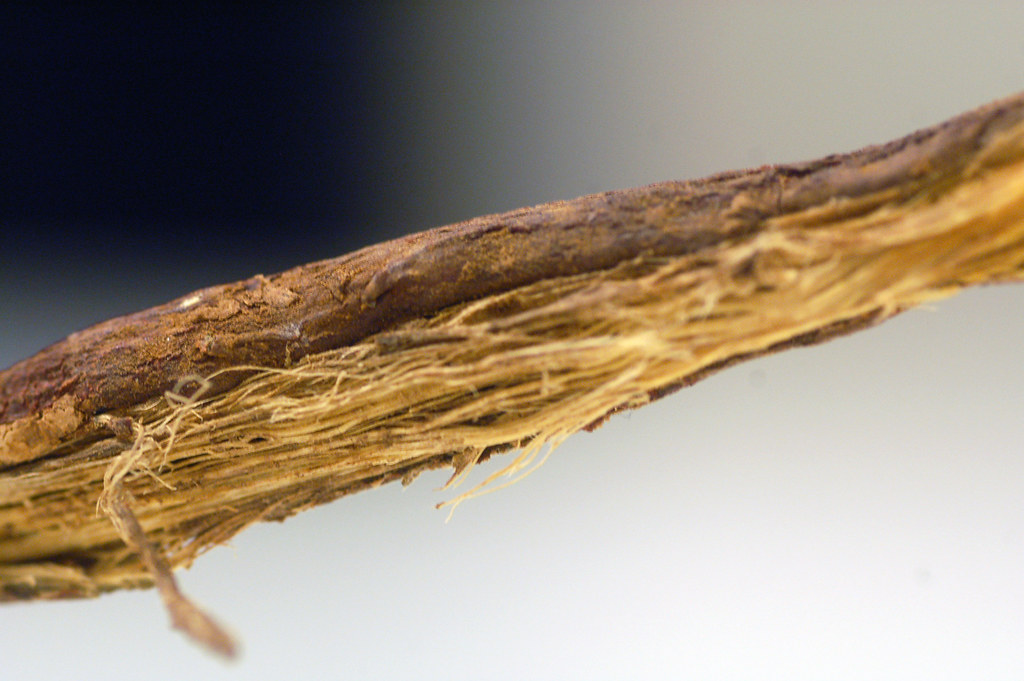
Overview:
Licorice root comes from parts of Europe and Asia, where it grows as an annual plant. Its sweet-tasting root has been used in food and drinks as a flavoring agent and as a medicine in traditional treatments.
Parts Used:
The underground stems and roots are used to extract the active compounds for medicinal and culinary purposes.
Key Benefits:
- Digestive Health: Licorice root is often used to help heartburn, ulcers, and gastritis, among other digestive problems. The root has a chemical called glycyrrhizin, which can help protect the gut lining by reducing inflammation and making it feel better.
- Respiratory Health: The root can help relieve the signs of respiratory problems like bronchitis, asthma, and sore throats by making you cough and reducing inflammation.
- Liver protection: Some studies show that licorice root can help protect the liver from damage and could be used to treat conditions like non-alcoholic fatty liver disease.
- Support for the adrenal glands: Licorice root may help the adrenal glands work better, which can help the body deal with stress. This is thought to be because it can make cortisol, the main stress hormone in the body, last longer.
- Health: Licorice root extracts are often used in skin care products to help treat skin conditions like eczema and acne. This is because licorice root extracts have anti-inflammatory and antimicrobial qualities.
Dosage and Usage:
- Licorice root can be consumed in various forms:
- Tea: Steeping dried licorice root in hot water makes a sweet, soothing plant tea.
- Capsules and tablets are often used to treat certain conditions.
- Tinctures and extracts are liquids that can be taken on their own or mixed with drinks.
- Powders: You can put these in drinks or put them on food.
- For licorice root tea, a common suggestion is to steep 1 to 5 grams of the root in hot water. The right dose depends on how the tea is made and what it will be used for. For extracts and supplements, it’s important to follow the instructions that come with the product or talk to a medical provider.
Safety and Precautions:
- Because it has a chemical called glycyrrhizin, licorice root can cause side effects if you eat a lot of it for a long time. Some of these effects are high blood pressure, a buildup of salt, a drop in potassium levels, and, in the worst cases, problems with the heart.
- Women who are pregnant or nursing should not eat a lot of licorice root.
- Some drugs, like diuretics, corticosteroids, and drugs for high blood pressure, can be combined with licorice. Before taking licorice root, you should talk to a doctor or nurse if you are taking any kind of medicine.
Conclusion:
Traditional medicine has used licorice root for thousands of years because of its sweet taste and many healing qualities. Even though it has a lot of benefits, it’s important to know about possible side effects and interactions, especially with long-term or heavy use. Always talk to a doctor before adding licorice or any other new substance to your daily routine.
18. Oat Straw (Avena sativa): It can have a calming effect on the nervous system.
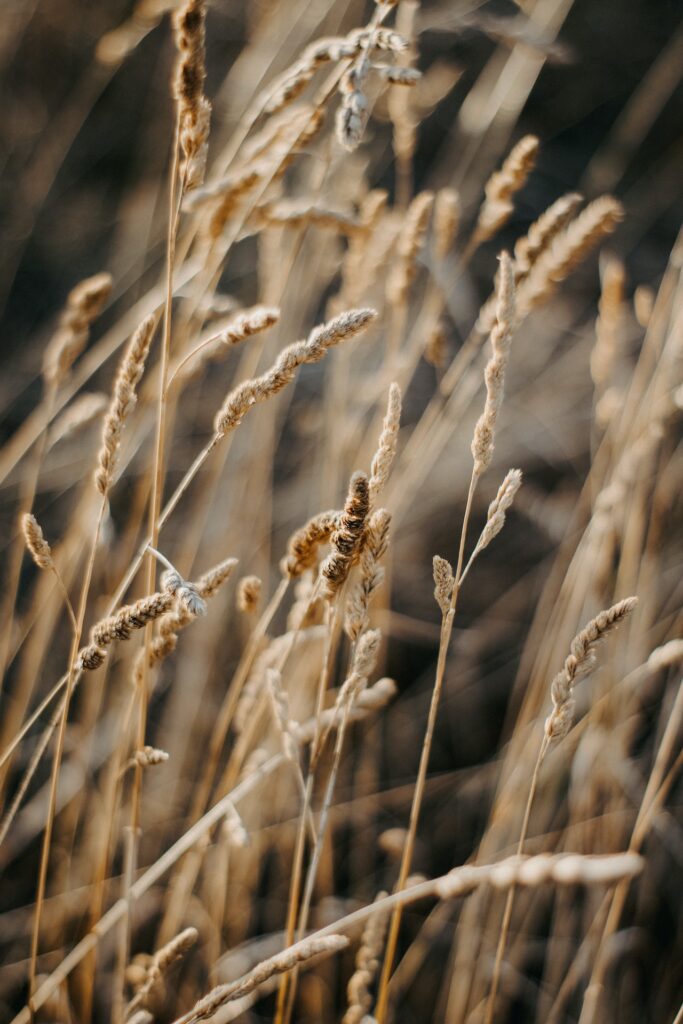
Overview:
The green stem and leaves of a young oat plant are called “oat straw.” As the plant grows up, it makes oat grain, which is now a famous cereal grain all over the world. In the past, oat straw has been used in traditional plant medicine in Europe because it has many health benefits.
Parts Used:
The green stalks and sometimes the seeds of the young oat plant are used for medicinal preparations.
Key Benefits:
- Support for the nervous system: Oat straw has been used for a long time as a nerve booster. It is thought to feed and calm the nervous system, which could help with things like worry, stress, and even nerve pain.
- Cognitive Function: Some studies have shown that oat straw extract can improve cognitive function and may help older people focus and concentrate better.
- Health of the skin: Oat straw can help with eczema, burns, and other skin problems because it has anti-inflammatory and soothing qualities. This is why it is sometimes used in baths.
- Bone Health: Oat straw has a lot of calcium and other minerals, which can help keep bones healthy and may help avoid osteoporosis.
- Sexual health: Oat straw has long been used as an aphrodisiac and may help both men and women increase their libido.
Dosage and Usage:
- Oat straw can be consumed or used in various forms:
- Tea: Steeping dried oat straw in hot water makes a light, pleasant tea. One to three teaspoons of dried oat straw per cup of water is a typical dose.
- You can consume tinctures and extracts on their own or mix them into beverages.
- Capsules and tablets are a handy way to take oat straw, especially if you want to get certain health benefits from it.
- Baths: Oat straw can help soothe your skin when added to a bath.
- Always make sure to follow the instructions that come with the product or talk to a medical professional about the right doses.
Safety and Precautions:
Most people think that oat straw is safe to eat. But people who have celiac disease or are sensitive to gluten should make sure that any product they use is confirmed gluten-free, since oats are often processed in the same places as other grains that contain gluten.
As with any plant or supplement, it’s best to start with a small amount to see how your body responds and to talk to a doctor before using it regularly, especially if you’re pregnant, nursing, or taking other medicines.
Conclusion:
Oat straw might be good for your health in a number of ways, from helping the nervous system to improving brain function and skin health. It is gentle, so many people can use it. However, as with any plant remedy, it is important to know its properties, possible interactions, and contraindications.
19. L-Theanine: An amino acid found in tea leaves, known for its calming properties.
Overview:
L-Theanine is an amino acid that is not part of proteins but has been studied a lot because it might be good for the brain and nervous system. It’s most well-known for being found in green and black tea leaves, and it’s a big part of what makes tea taste like tea.
Sources:
Tea Leaves: The best natural sources of L-Theanine are green, black, and white teas.
Supplements: L-Theanine can also be taken as a supplement. It is often made by fermenting certain foods or is manufactured.
Key Benefits:
- One of the most noticeable benefits of L-Theanine is that it makes you feel relaxed without making you sleepy. This is thought to be because it can make more of the neurotransmitters GABA and dopamine, which both help with happiness and relaxation.
- L-Theanine has been studied in connection with caffeine, which is a combination that often occurs naturally in tea. This mixture can lead to better thinking, more focused attention, and quicker reactions.
- Stress and Anxiety: L-Theanine may help slow down how the body reacts to stress. Some studies have shown that it can drop cortisol levels, which is a main stress hormone, and also help people feel less stressed.
- Quality of Sleep: L-Theanine doesn’t always make you sleepy, but it can help you sleep better by making you more relaxed and less anxious.
- Neuroprotection: There is some proof that L-Theanine can protect nerve cells, which could make neurodegenerative diseases less likely.
Dosage and Usage:
Drinking tea: Just drinking tea can give you a dose of L-Theanine, though the amount will depend on the type of tea and how it was made.
Supplements: Most supplements are taken once or twice a day, with a dose of 100 to 200 mg. But the right dose can be different for each person, depending on their goals and what they want to happen. Follow the instructions that come with the product or talk to a health care provider.
Safety and Precautions:
L-Theanine is usually thought to be safe, and there aren’t many known side effects. But, as with any vitamin, taking too much of it could cause stomach pain or make you feel dizzy.
When taken as a vitamin, it’s important to make sure it doesn’t react badly with other drugs or supplements. Always, it’s best to talk to a health care professional.
Conclusion:
L-Theanine is a unique way to relax without falling asleep. This makes it a good choice for people who want to relieve stress or improve their brain power without getting jittery from drugs. Researchers and health fans are interested in L-Theanine because it might help the brain. It can be taken in the form of a relaxing cup of tea or as a supplement.
20. Schisandra (Schisandra chinensis): An adaptogen that supports stress resistance.

Overview:
Schisandra, which is sometimes called “five-flavor berry,” is a woody vine that grows in the woods of Northern China and the Russian Far East. It gets its name from the way the berries taste, which is a mix of sweet, sour, salty, bitter, and spicy.
Parts Used:
The primary part of the plant used for medicinal purposes is the berry. These berries can be consumed directly, made into extracts, or formulated into various preparations.
Key Benefits:
- Adaptogenic: Schisandra is an adaptogen, which means that it helps the body deal with and fight both physical and mental stress. This can improve your stamina, mental performance, and feeling of well-being.
- Protection for the liver: Schisandra is hepatoprotective, which means it helps the liver work and protects it from toxins. It has been used to treat hepatitis and other liver diseases for a long time.
- Effects on antioxidants and inflammation: The compounds in Schisandra berries, especially lignans, have strong antioxidant and anti-inflammatory qualities that can help the body fight oxidative stress and inflammation.
- Schisandra has been shown to have neuroprotective effects, which could improve mental function, boost memory, and guard against diseases that damage nerve cells.
- Boosts the immune system: This herb can help the body’s immune system work better, making it more resistant to common illnesses.
- Skin Health: Schisandra is good for skin health because it has antioxidant qualities that protect against premature aging and make skin look better.
Dosage and Usage:
- Teas and Decoctions: Schisandra leaves can be used to make tea or a strong drink called a decoction.
- Capsules and tablets: These often have powdered or drained forms of the berry.
- Tinctures and extracts are liquid preparations that have the beneficial chemicals of berries in a more concentrated form.
- Most of the time, a daily dose of dried nuts might be between 1.5 and 6 grams. But as always, it’s important to follow the instructions that come with the product or talk to a health expert.
Safety and Precautions:
- Schisandra is generally thought to be safe for most people when taken as directed. But, even though they are rare, possible side effects can include stomach upset, loss of hunger, skin rash, and itching.
- Women who are pregnant or breastfeeding and people who have seizures should stay away from Schisandra.
- As with any herb or supplement, there is a chance that it could combine with a medicine. People who take anticoagulants, anticonvulsants, or medications that the liver changes should be cautious and consult a doctor.
Conclusion:
Schisandra is a herb that has been used in traditional medicine for a long time, especially in the Chinese system. Its ability to help the body adapt to stress, along with its other health benefits, make it a good addition to many kinds of treatments. Before adding it to a health habit, it’s important to know what it does and how it might interact with other things.
21. Eleuthero (Siberian Ginseng) (Eleutherococcus senticosus): Another adaptogen, often used to combat fatigue and stress.

Overview:
Eleuthero is a small, woody shrub that grows in the woods of Russia, China, Korea, and Japan. Even though it’s often called Siberian Ginseng, Eleuthero is not a real ginseng. Most of the time, the word “ginseng” refers to trees in the genus Panax. But Eleuthero has been called “ginseng” because it has some of the same traits and uses as ginseng.
Parts Used:
The roots of the Eleuthero plant are the primary part used for medicinal purposes.
Key Benefits:
- Adaptogens: Eleuthero is known as an adaptogen, which means that it helps the body deal with stress and adjust to it. This can help you think more clearly, feel less tired, and be stronger overall.
- Some studies show that Eleuthero can help the immune system work better, which could make colds and other common sicknesses last less long and be less bad.
- Increased Energy and stamina: Eleuthero has been used for a long time to increase energy and stamina. Because of this, it is a favorite supplement among athletes and people who live active lives.
- Some data suggests that Eleuthero can improve cognitive functions such as memory and focus.
- Antioxidant Properties: Studies have shown that eleuthero has antioxidant properties that help the body fight off reactive stress.
- Heart Health: Some studies suggest that Eleuthero may help heart health by making the blood flow better and lowering the amount of bad cholesterol in the body.
Dosage and Usage:
- Drinks and Decoctions: The dried root of Eleuthero can be used to make drinks or decoctions.
- Capsules and tablets often have powdered or extracted forms of the root.
- Tinctures and extracts: The helpful chemicals in Eleuthero are more concentrated in these liquid forms.
- Standardized Eleuthero extract is often given in doses between 300 mg and 1200 mg per day. But, as with most herbs, it’s important to follow the directions that come with the product or talk to a medical expert.
Safety and Precautions:
- When taken in the right amounts, eleuthero is usually well accepted and thought to be safe for most people. But some people may have side effects like trouble sleeping, diarrhea, or changes in their blood pressure.
- Women who are pregnant or nursing, as well as people who have high blood pressure or autoimmune diseases, should be careful with Eleuthero and talk to a doctor.
- It’s important to know about possible drug combinations, especially with anticoagulants, anticonvulsants, or medicines for high blood pressure or diabetes.
Conclusion:
Eleuthero, also known as Siberian Ginseng, is a well-known adaptogen that has been used in traditional treatment for a very long time. It is a notable plant because it might help with things like relieving stress, boosting the immune system, and improving brain function. But, as with any herbal remedy, it’s important to know its qualities, possible interactions, and side effects before adding it to your health routine.
22. Brahmi (Bacopa monnieri): Supports cognitive function and helps reduce stress.

Overview:
Brahmi is a creeping annual herb that grows in the wet areas of Southern and Eastern India, Australia, Europe, Africa, Asia, North and South America. In Ayurveda, Brahmi is seen as a herb that makes the mind and nerve system feel better.
Parts Used:
The whole plant, especially the leaves, is used for medicinal purposes, either in the form of an extract or powder.
Key Benefits:
- Brahmi is best known for the nootropic benefits it has on the brain. Several studies have shown that it can help improve memory, focus, and the way the brain works.
- Antioxidant qualities: Brahmi has powerful antioxidant qualities that can help fight oxidative stress and protect the brain.
- Adaptogenic: Brahmi, like many herbs used in traditional medicine, has qualities that help the body deal with stress.
- Anti-inflammatory Effects: The plant has been shown to have anti-inflammatory effects, which may help explain why it has a positive effect on cognitive health as a whole.
- Effects as an antidepressant and anxiolytic: Some study shows that Brahmi can help relieve anxiety and depression symptoms.
- Neuroprotection: There is proof that Brahmi may protect against diseases that damage nerve cells and may help brain tissue grow back.
Dosage and Usage:
- Capsules and tablets usually have controlled extracts of the herb inside them.
- Powders: You can mix Brahmi powder with water, juice, or make drinks with it.
- Tinctures and liquid extracts are concentrated forms that can be added to drinks.
- Tea: Brahmi leaves can be used to make tea, but this isn’t done as often.
- Depending on how the herb is made and how it is used, the dose can be different, but most people take between 300mg and 450mg of a standardized extract every day. Always follow the instructions that come with the product and talk to a medical professional if you have questions.
Safety and Precautions:
- Most people should be fine taking Brahmi if they do it the right way. But some people may experience side effects like stomach pain, dry mouth, or feeling tired.
- Before using Brahmi, women who are pregnant or nursing should be careful and talk to a doctor.
- Herbs can interact with medicines, just like many other things can. People who take medicines to treat thyroid problems, high blood pressure, or slow down the central nervous system should be especially careful.
Conclusion:
Brahmi, also called Bacopa monnieri, is a herb with a long history of use in Ayurvedic medicine, especially for improving memory. Because it has many uses, both traditional practitioners and modern scholars are interested in it. Before adding it to a health routine, it’s important to know what it does, how it might combine with other things, and how much to take.
23. California Poppy (Eschscholzia californica): Often used for its sedative properties.

Overview:
The California Poppy is an annual plant that grows in California and other western states. This plant grows well in open places and has bright orange to yellow flowers that close at night or on cloudy days.
Parts Used:
The aerial parts (above ground) of the plant, especially the flowers, leaves, and stems, are used for medicinal purposes. The seeds are also sometimes utilized.
Key Benefits:
- Sedative Effects: The California Poppy has mild sedative effects that can help people with sleeplessness sleep better and get better sleep overall.
- It has been used for a long time to ease pain, especially mild pains like headaches and toothaches.
- Mood Lifting: Some people who use California Poppy find relief from anxiety and sadness because it can calm and lift their mood.
- California is a muscle relaxant. Poppy is sometimes used to treat conditions like restless leg syndrome because it can help stop muscle twitches.
- Support for Attention Disorders: Anecdotal evidence says that the California Poppy might help with attention-deficit disorders, but there isn’t much scientific evidence to back up this claim.
Dosage and Usage:
- Tinctures and Liquid Extracts: These are liquid forms of the California Poppy that are very concentrated. They are often eaten with water or juice to dilute them.
- Capsules and tablets may contain dried forms of the plant or an extract of it.
- Teas: The plant’s leaves can be used to make a herbal drink.
- The usual dose depends on the type of medicine and how much the person needs. Always make sure to follow the instructions that come with the product or talk to a health worker.
Safety and Precautions:
- Even though California Poppy is usually safe for most adults when taken in moderation, it can cause sleepiness, especially when taken in larger amounts or with other drugs that make you sleepy.
- Because there isn’t enough information about how safe California Poppy is for women who are pregnant or nursing, it is recommended that they stay away from it.
- People who are going to have surgery should stop taking California Poppy at least two weeks before. It could interact with anesthesia and other medicines used during operation.
- As with any herb or supplement, there is a chance that it could combine with a medicine. It’s important to talk to a doctor if you’re taking medicines, especially sedatives or other drugs that slow down the central nervous system.
Conclusion:
Even though the California Poppy is known for its bright beauty, it is also used in plant medicine. It is useful for many things because it makes people feel better and relieves pain. But before adding it to a health habit, it’s important to know how it works, how it might interact with other things, and how much to take.
24. Mugwort (Artemisia vulgaris): Sometimes used for its calming properties.

Overview:
Mugwort is from Europe, Asia, and northern Africa, but it has spread to many other places, including North America. This tall, fragrant plant has dark green, pinnate leaves and small, yellow or brownish-red flowers.
Parts Used:
The aerial parts (leaves, stems, and flowers) of the plant are used for medicinal and other purposes.
Key Benefits:
- Digestive Aid: Mugwort has been used for a long time as a tea or tincture to help with stomach problems like bloating, gas, and heartburn.
- Mugwort has been used for a long time to help with menstruation. It has been used to start menstruation and relieve signs of menstrual disorders or irregular cycles.
- Some people think that putting mugwort under their pillow or eating it can make their dreams more vivid and help them become more aware of what they are thinking.
- Mugwort has long been used to treat infections because it has antimicrobial properties.
- Mugwort is sometimes used to ease anxiety and tension in the nerves.
Dosage and Usage:
- Teas: Mugwort leaves that have been dried can be used to make a herbal drink.
- Tinctures and liquid extracts are liquid forms of mugwort that are very strong.
- Some people use mugwort for spiritual or religious reasons by smoking it or burning it as smudge sticks.
- Poultices: Mugwort can be put on bruises or swellings as a poultice, whether it is fresh or dried.
- The usual dose depends on the type of medicine and how it is to be used. Always, it’s best to talk to a professional in health care or plant medicine.
Safety and Precautions:
- Mugwort has a chemical called thujone in it that can be harmful in large amounts. Consuming too much should be avoided.
- Women who are expecting or nursing shouldn’t use mugwort because it can overwork the uterus, which could result in a miscarriage.
- Some people may be allergic to mugwort, especially if they are sensitive to other plants in the Asteraceae family, like ragweed, marigolds, and daisies.
- If you take mugwort with other drugs that make you sleepy, they might work better. If you want to mix mugwort with medicine, you should always talk to a doctor or therapist first.
Conclusion:
Mugwort has been used in herbalism for a long time and is known to help with digestion and improve dreams, among other things. But it’s important to use it with understanding and care, since it has powerful active compounds that could cause bad reactions or interact with other substances.
25. Catnip (Nepeta cataria): Not just for cats! It has mild sedative properties that can be calming for humans too.

Overview:
Catnip is a perennial plant that comes from Europe and Asia. It is also called catmint or catswort. It is in the mint family, Lamiaceae, and has heart-shaped, grayish-green leaves and small white or lavender flowers that bloom in late spring and summer.
Parts Used:
Primarily, the leaves and flowers, either fresh or dried, are used for medicinal and culinary purposes.
Key Benefits:
- Catnip has been used for centuries as a light sedative to help people sleep better and feel less anxious. For this reason, it is often made into a tea and drunk.
- Helps with digestion: The herb can ease complaints like indigestion, gas, and colic. It can also help stop diarrhea and is sometimes used as a weak muscle relaxant.
- Catnip has properties that help reduce stiffness and pain when it is put on the skin.
- Insect repellent: Some studies and anecdotal evidence suggest that catnip essential oil can keep insects away, including mosquitoes.
- Some women use catnip to ease the pain of their period cramps.
Dosage and Usage:
- Herbal teas can be made from dried catnip leaves and flowers.
- Tinctures: There are concentrated liquid forms of catnip that can be taken straight or mixed with water.
- Capsules and tablets: Catnip might come in the form of a pill in some plant supplements.
- Catnip-infused oils or balms can be put on the skin to help ease pain or inflammation.
- Most people can drink 1-2 cups of catnip tea every day without getting sick. But the doses can be different depending on the form and what you want to happen.
Safety and Precautions:
- Most people can eat a moderate amount of catnip without getting sick, but if they eat too much, they might get headaches, throw up, or feel sick.
- Catnip shouldn’t be used by women because it can make the uterus work too hard, which can cause a miscarriage.
- Catnip can cause allergies, just like any other plant. Those who are allergic to mint family plants should be careful.
- People who take sedatives should talk to a doctor before using catnip, because it may make the sedative effects stronger.
Conclusion:
Catnip has effects on cats that are well known, but it is also used in herbal medicines for people. It can be used for many things, from making you feel calm to helping your stomach. As with all herbs, it’s important to know how it works and what it might do to other things before adding it to your health routine.
Always remember to choose high-quality herbal products and be aware of potential interactions with medications or other health conditions. If in doubt, consult with a healthcare professional before using any of these herbs.
Thank you for reading the post. If you found the information valuable and helpful, please consider sharing it with your family and friends. Spreading knowledge can empower and uplift many. Let’s make holistic well-being accessible to all! For more insights, check out my other post here.
External source
Wikipedia: – Herbs in traditional medicine
Image source : Aswaghandha By Wowbobwow12 at English Wikipedia
Valerian Root (Valeriana officinalis) By Ivar Leidus – Own work, CC BY-SA 4.0
Holy Basil (Tulsi) (Ocimum sanctum) By Shashidhara halady – Own work, CC BY-SA 3.0
Rhodiola Rosea by Opioła Jerzy – Own work, CC BY 2.5
Kavakava by Forest & Kim Starr, CC BY 3.0
Gotu Kola by Shahidul Hasan Roman – Own work, CC BY-SA 4.0
Maca by Roots, Tubers and Bananas
Licorice root by denAsuncioner
Schisandra by Doronenko 08:40, 9 April 2007 (UTC) – Own work, CC BY 2.5

